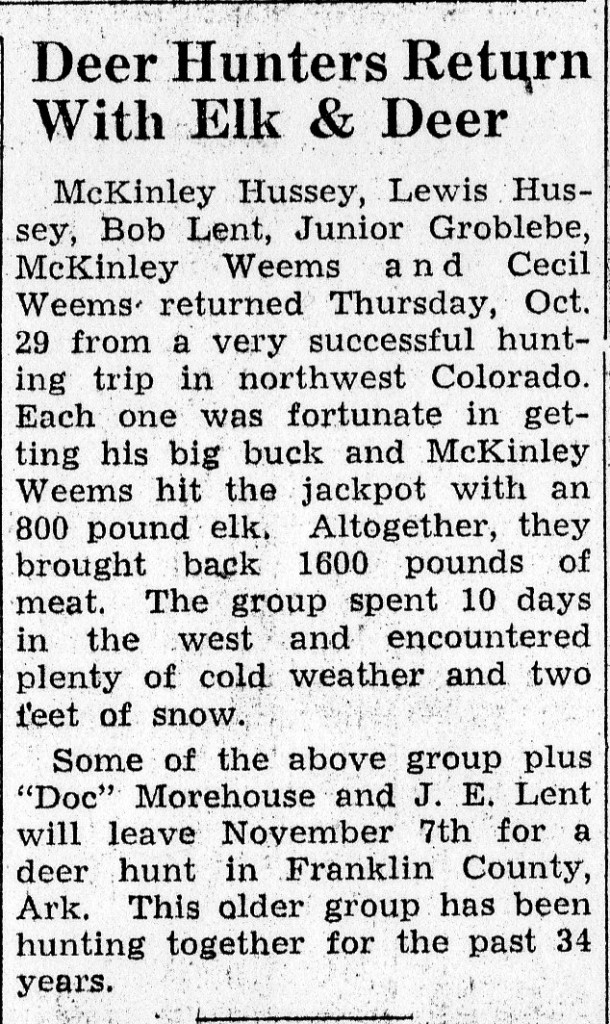McKinley Weems remembers as a boy the first time he saw Lola Wolfinbarger. His family was traveling to a burial at the Rockhouse Cemetery and stopped at the Wolfinbarger house. Lola and her sisters were in the yard.
On June 18, 1939, McKinley Weems and Lola Wolfinbarger of Eureka Springs were married. They both come from families where you count your cousins by the dozen. Mac was the eighth of the nine children of Walter and Luella (Pinkley) Weems. He was born and raised on Magnetic Road, except for when the springs were dry during the Great Depression and they lived next door to Aunt Cora Pinkley-Call in town.
Lola was the seventh of ten children born to Arl and Mary Lula (Cordell) Wolfinbarger. She was born and raised near Keels Creek southeast of Eureka Springs.
With the exception of the war years, they’ve always lived on the outskirts of Eureka Springs. They were away during the war when their first home burned down. When they returned they purchased the house at 1 Magnetic for $75 and lived there for almost 20 years. With a small house and a growing family, they built a new home to accommodate their eight children.
With so many mouths to feed, they’ve sometimes had to scramble to make ends meet. McKinley has been fixing and building things since his first job in 1934 at Mac Hussey’s garage on Main Street. He worked on radios and refrigerators for Ray Freeman and Eagle Thomas, before buying a bulldozer.
A farm girl, Lola has always known work. Besides farm work, she ran traps and sold animal skins before marriage. Since then she has raised children and gardens and owned and operated Country Antiques for nearly 40 years.
They’ve continued the tradition of having cousins by the dozen, with about 50 grandchildren and great-grandchildren thus far. They’ve enjoyed the benefits of the large family, but they’ve also endured the loss of three children, two grandchildren and a great-grandchild.
Today, they celebrate the 75th anniversary of their marriage. It is called a “Diamond Anniversary.” I looked it up.

